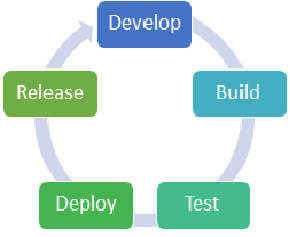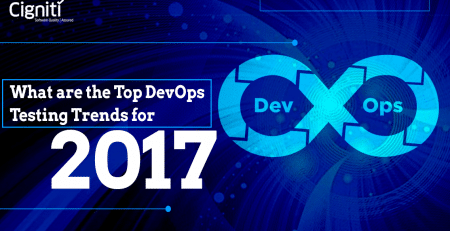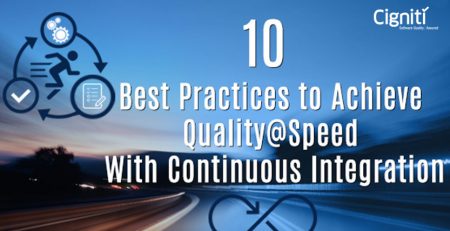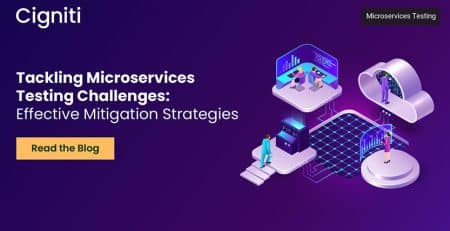How can Continuous Delivery Accelerate Software Testing and Development?
According to projections by market research firm Canalys, the Apple Watch dominated the wearable market during the last quarter and almost the entire 2016. It further states that Apple is setting records and eating up the market share of its nearest competitor. The smartwatch segment is highly competitive and has numerous big and small entrants with competing prices. How are brands such as Apple able to gain this competitive edge? Is Continuous Delivery, Agile testing, and DevOps the answer?
As per the same report, Apple has shipped a record of more than 9 million units in the quarter and clocked a revenue of over $2.6 billon, which accounts for over 80% of the market’s total smartwatch revenue. This estimates that if quality and time-to-market is given required importance, it can bring in the desired revenues and sustained brand value.
Continuous Delivery in software development is the capability to execute all possible changes – new features, configuration changes, fixing bugs and further experiments during production or post-production phase in a risk-free manner. The ultimate goal is to make deployments on a large-scale across a distributed system, on a multi-layered production environment, an embedded system, or a software/application.
With Continuous Delivery these deployments can be done as and when required, on demand. This can be achieved by ensuring that the code is always in a deployable state, even while multiple developers make changes on a continuous basis.
How do Continuous Delivery and DevOps differ?
Continuous Delivery and DevOps seem to be conceptually similar, however, they are distinct concepts. DevOps has a wider scope and focuses on the cultural change that is required for collaboration of various teams – developers, operations, quality assurance, testers, management, and any relevant function. On the other hand, Continuous Delivery entails an approach to automate and focus on combining various processes and execute them efficiently with speed.
Practically, DevOps can be referred to as a product of continuous delivery, whereas continuous delivery integrates into the overall DevOps approach.
Continuous Delivery brings a lot of relevance today, as there are massive challenges and requirements that are triggered by the digital era. Testing and assessment can happen at any stage and the product can be launched and brought back to production for further testing.
So, it is certainly applicable today when the team ensures that code is deployable at any stage. For instance, many start-ups and new age enterprises do not spend time on complete testing and then launch the product in the marketplace. They believe in taking risks and integrating the changes on a continuous basis.
At the same time, Continuous Delivery does not necessarily suggest taking risks, but can be considered as a way to deal with the burgeoning challenges of the digital landscape. So, the code doesn’t get frozen, it is continuously delivered for enhancement, which ultimately speeds up the software testing and development cycle.
Why consider Continuous Delivery?
With highly regulated domains like financial services and government bodies, there is a need for frequent software deployment. Releasing software and deploying constantly is a painstaking, risky, and tedious task. In such cases, Continuous delivery brings a massive advantage for organizations, who are ready to invest in the effort to deliver effectively and with quality.

It can help large enterprises to get more lean, agile, and responsive. With reliable and low-risk releases, Continuous Delivery helps build software by constantly integrating user feedback, move to the market, understand, and if required even change the business strategy.
Positively speaking, in this way testing team, support team, development team, and the operations team work in a dynamic course to automate and streamline the build, test, and release cycle.
Continuous Delivery test strategy defines a pattern in which today’s agile business leaders pull inferences from the marketplace on a constant basis and build the product/software. Massive software engineering projects get replaced by small iterations, which helps them to move swiftly to production, enabling multiple releases on a daily basis.
Software testing with Continuous Delivery brings repeatability and automation, which accelerates deployment pipeline for software development with pumped up velocity.
The core practices of Continuous Delivery brings relevance to deal with current day challenges. We have tried to bring some key aspects together, do share your views on these.
- Enabling low risk releases:
The core objective of continuous delivery is to make software deployment less tedious, lower the risks and make them deployable any time as per the demand of the business. With the standard best practices, the deployments can happen with zero-downtime, and without impacting the experience of the users.
- Faster time-to-market:
The major strength with Continuous Delivery is accelerating the software delivery lifecycle, which would traditionally consume weeks or even months together. With this approach, development, testing, and deployment teams work cohesively to automate the build and deployment process. Regression tests are executed, where developers incorporate them at every stage, which results in minimal rework and helps build quality.
- Cost-effectiveness:
When the right investments are done to develop, test, deploy, and automate, it helps to substantially cut down the costs associated with development and delivering progressive changes to the software. This reduces the costs of making and delivering changes at the end by eliminating some fixed costs with the releases.
- Stronger teams build market-ready products:
Continuous delivery helps make the development process more economic, as teams work in small batches. So, the feedback is received throughout the delivery cycle for the software that is already operational. This overall makes releases less tedious, and distributes the efforts and responsibilities across the team.
Also, with more frequent release, software delivery teams engage more actively with the users, comprehend ideas that can actually work and get associated with the ultimate outcome and business objectives.
Continuous Delivery and DevTestOps is changing the overall approach towards software testing and software development. It is more progressive and believes in building quality by associating with the result. This not only accelerates SDLC, but also helps enterprises to build products that are more market-ready and robust.
Quality and Speed are the keywords that can assure growth for businesses in the digital era. At Cigniti, we regulate efforts and ensure accelerated time to market with DevOps Testing. We focus on delivering improved deployment quality and greater operational efficiency.
Connect with us to seamlessly intertwine quality and speed within your software/application development and deployment process. Gear up for the competitive marketplace.





Leave a Reply